Shouldering the Swiss border and split into two by the River
Mera, Chiavenna is a major draw in its eponymous valley, known for its artistic
and cultural beauty, rich gastronomic heritage and gentle pace of life – it’s
not called a Città Slow for nothing. Believed to date back to Etruscan times,
Chiavenna was an important Roman city and strategic location for trade between
Italy and the rest of Europe.
WHAT TO SEE IN AND AROUND CHIAVENNA
Full
of corners, narrow lanes and aging stone walls, Chiavenna is a beguiling spot,
no matter how many times you meander through its charming historic centre. Be
sure to cross the ancient bridge over the Mera and enjoy the storybook views of
the town
There are indescribable thrills when visiting the
Acquafraggia waterfalls located in Piuro, just outside of Chiavenna, which left
Leonardo da Vinci mesmerised during his visit to Valtellina. Visible
from the roadside, these are considered the area’s most important natural
monument and an undisputed symbol of Valchiavenna. In addition to the
waterfalls, Piuro is also famous for its archaeological treasures to
that extent that it is dubbed ‘the Pompei of the Alps’, having suffered a
devastating landside in 1618 that destroyed the village.
Two
further attractions take the shape of nature reserves: first up, the Parco
delle Marmitte dei Giganti with its fascinating ice-polished rock and impressive crevasses formed by
melting ice and erosion; then, it’s the turn of the Pian di Spagna Nature
Reserve, an expansive wetland with stunning biodiversity and home to a
large number of migrating birds during the season.
Any trip to the walkable town of
Chiavenna would not be complete without a tour of its many historic palazzi and
museums that radiate charm.
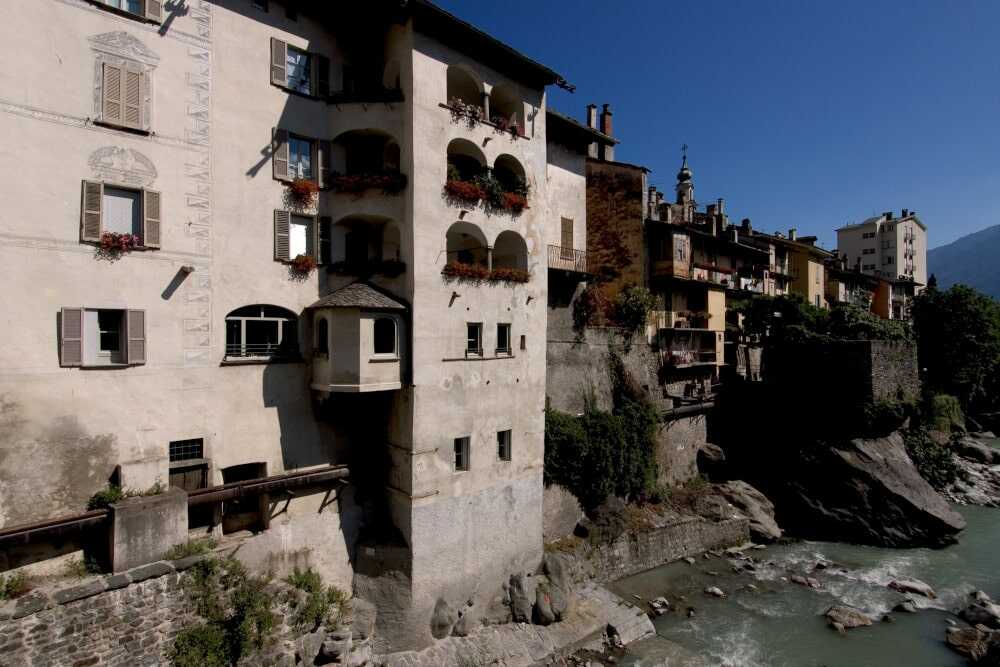
- Foreshortening from the river Mera on the town of Chiavenna
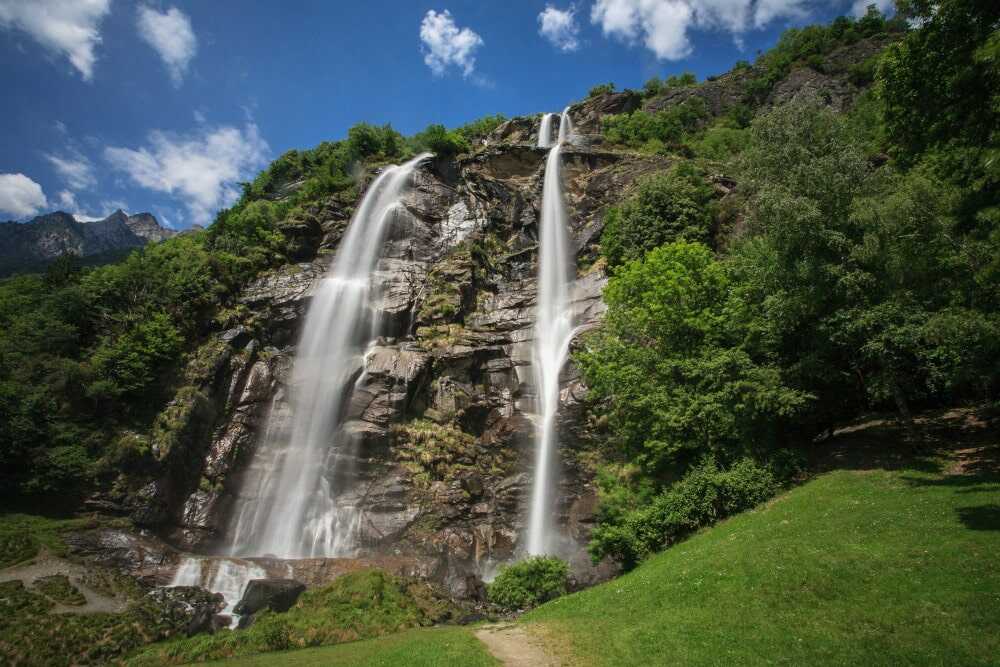
- The Acquafraggia waterfalls, among the symbols of Valchiavenna
MUSEUMS AND HISTORIC PALAZZI IN CHIAVENNA: WHAT TO VISIT
Recognised with the prestigious ‘Orange
Flag’ award from the Touring Club Italiano, Chiavenna hits above its weight
with its density of historic palazzi, most notably the stunning Palazzo
Vertemate, one of Lombardy’s most treasured
16th-century buildings. The 15th-century Palazzo of the Balbiani counts, Palazzo
Salis, and the two 16th-century Pestalozzi and
Pretorio palazzi are all equally as charming.
Located
inside the collegiate church of San Lorenzo with its renowned baptismal font,
the Museo
del Tesoro –
Treasure Museum – is home to a number of significant artefacts, including the
exquisite 11th century ‘Pace’, one of the finest works of its kind made with
engraved gold, precious stones, pearls and enamels. Piquing your interest even
more, the Galleria
Storica dei Pompieri di Valchiavenna celebrates the heritage of the fire brigade with an engaging exhibition,
as does the Mulino
Moro di Mottonera, a
historic mill that testifies to Chiavenna’s artisanal heritage.
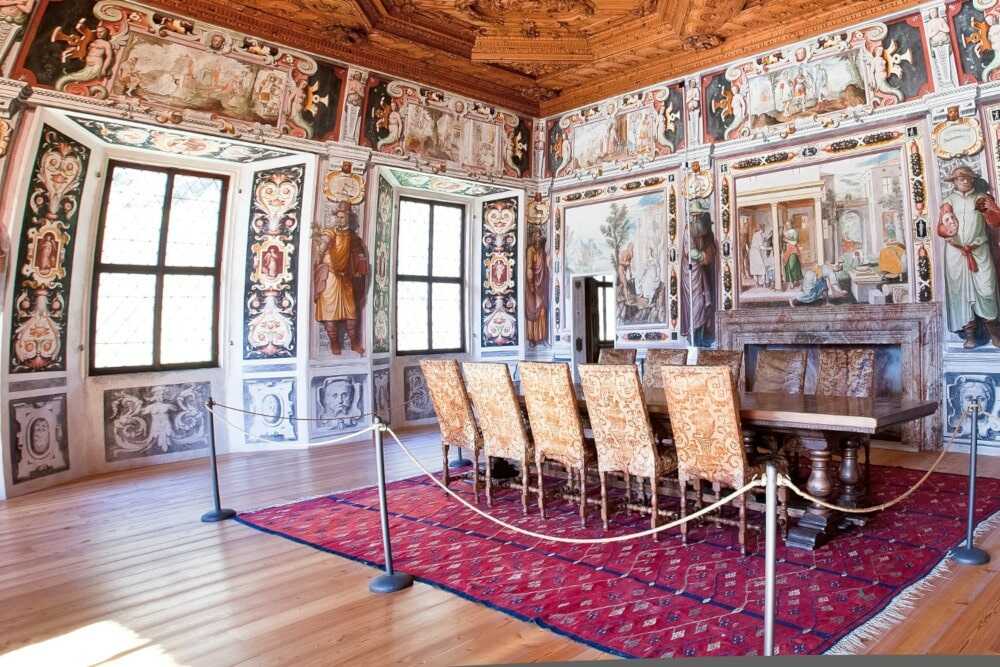
- An interior of Vertemate Palace
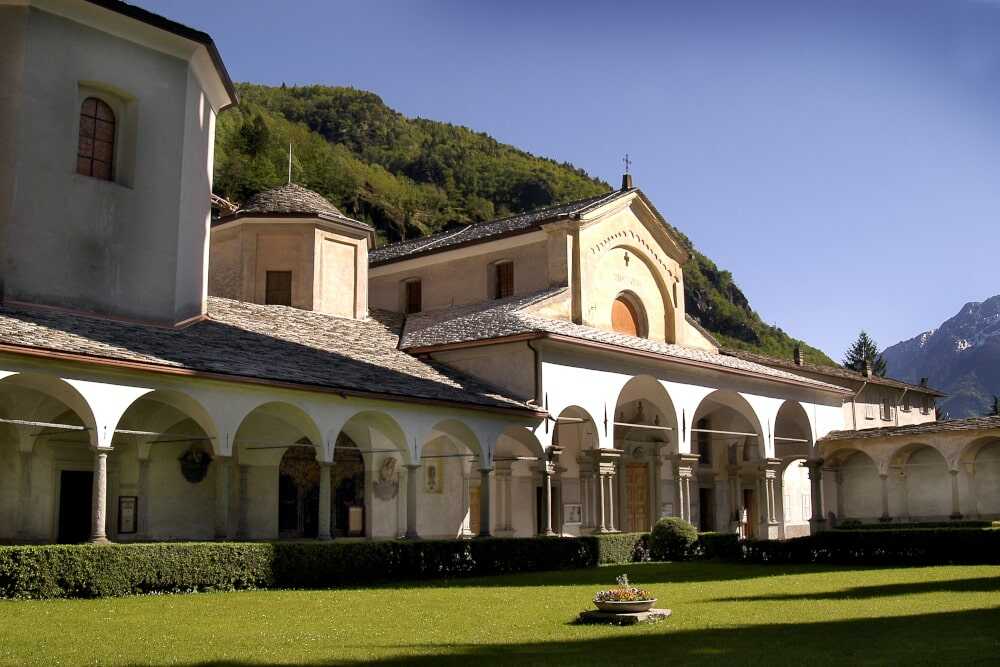
- The Collegiate Church of S. Lorenzo houses the Museum of the Treasure
CHIAVENNA FOR THE FOODIES
You’re
never far from authentic local cuisine in Valchiavenna, which boasts a rich
gastro heritage, exemplified by the age-old natural caves called ‘Crotti’ that benefit from a natural breeze known as ‘sorel’. This daily wind has
long ensured a consistent temperature all year to best preserve the area’s
wine, meat and cheese. Now part of Valchiavenna’s social fabric, the crotti are
where you’ll go to tap into a connection with the finest food and wine from the
region.
Sample
local delicacies like local gnocchetti – also known as Valchiavenna’s version of pizzoccheri – as well as
polenta taragna, dried cured meats like brisaola and Violino di Capra (made
exclusively from the thigh or shoulder of Orobica goats) before satisfying your
sweet tooth with a slice of Fioretto cake or Prosto biscuits, still made with
the age-old recipe. While best enjoyed with a glass of Valtellina red wine, a
beer would not go amiss either: thanks to the quality of the water and the
Austrian influence during the 19th century, Valchiavenna has made of a name for
itself in the world of artisan beer.
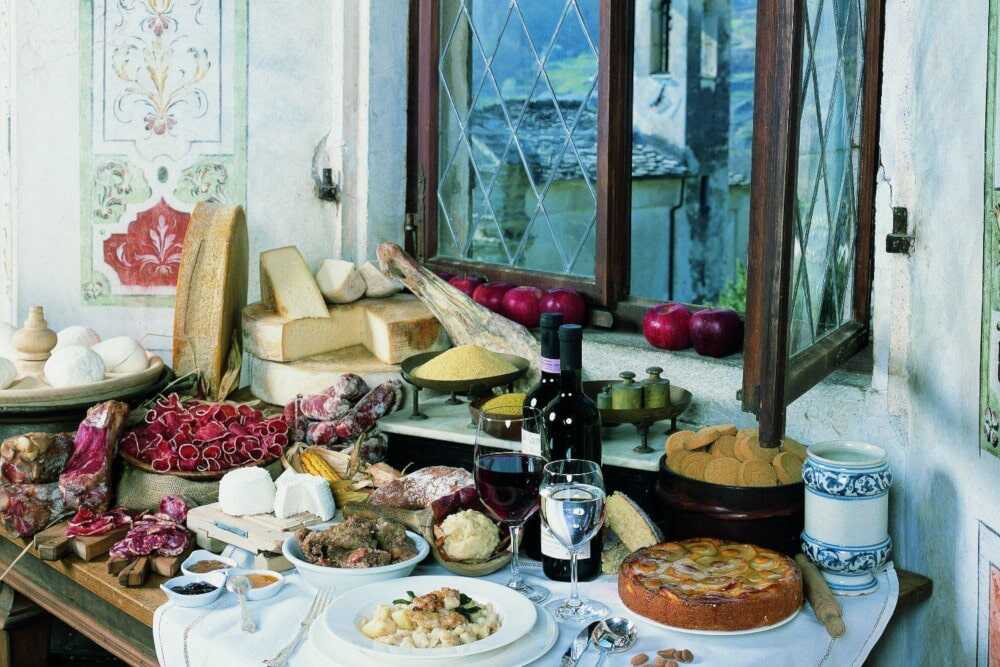
- A table laid with the numerous typical products of Valchiavenna
OUTDOOR ACTIVITIES IN CHIAVENNA AND AROUND
For hiking, the Via Spluga is probably the most important trail which connects Chiavenna and Thusis, in Switzerland. You can also try to reach Savogno and Codera, two locations reachable only on foot.
If you are a cycling lover, do not miss to enjoy the Cicalbile Valchiavenna, suitable for all the family. Last but not least: experience the thrilling of canyoning in Val Bodengo!
Se invece la vostra passione è la bicicletta, la Ciclabile della Valchiavenna è il più importante itinerario di cicloturismo.
Merita infine di essere menzionato anche il canyoning in Val Bodengo: adrenalina e divertimento sono assicurati!
Info: www.valchiavenna.com



